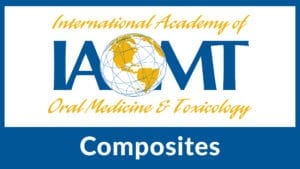

This authors of this 2014 research article conducted a search resulting in 12 longitudinal studies of direct posterior resin composite restorations with at least 5 years’ follow-up. They explain, “on average, posterior resin composite restorations show a good survival, with annual failure rates of 1.8% at 5 years and 2.4% after 10 years of service.” [...]
This authors of this 2014 research article analyzed data from the National Dental Practice-Based Research Network to identify predictors of early failures of amalgam and resin-based composite (RBC) restorations. The authors explain, “The early failure rate of direct restorations in this study was 6.6% after an average follow-up of 24 months. There was no evident [...]
There is considerable concern among scientists and the public about the hormone-mimicking properties of many chemical components of plastics, including those found in dental composites. The commonly used Bis-GMA resin uses one of the most controversial of these, Bisphenol-A (BPA). Responsible composite manufacturers claim that there is no unreacted BPA in dental resins, and that [...]
ASSESSMENT OF EXPOSURE AND RISKS FROM COMPONENTS AND DEGRADATION PRODUCTS OF COMPOSITE RESIN DENTAL MATERIALS G. Mark Richardson This 1996 analysis, made prior to the emergence of endocrine disruption as a consequence of very low level exposures, concludes: Based on the foregoing analysis, it was concluded that composite resin dental restorations containing silica [...]
In addition to the articles catalogued here, the IAOMT has other materials about composites and bisphenol A. Additional Articles on Composites/Bisphenol A
